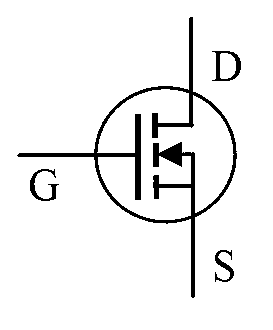Boosted circuit
A booster circuit and circuit technology, applied in electrical components, adjusting electrical variables, instruments, etc., to achieve the effects of low cost, convenient use and low power consumption
- Summary
- Abstract
- Description
- Claims
- Application Information
AI Technical Summary
Problems solved by technology
Method used
Image
Examples
no. 1 example
[0050] Figure 4 It is a functional block diagram of a booster circuit of the present invention, which is completely drawn according to the technical scheme, Figure 5 It is the schematic diagram of the first embodiment of the present invention, and its connection relationship fully complies with the connection relationship in the technical solution, as follows:
[0051] A boost circuit, see Figure 5 , comprising a surge suppression circuit 20, the dashed line box 20 is a surge suppression circuit, a linear voltage regulator circuit 30, an oscillator circuit 40, a voltage doubler rectifier circuit 50; the surge suppression circuit 20 includes three ports, and the surge suppression input Terminal 21, surge suppression output terminal 23, surge suppression ground terminal 22; linear voltage regulator circuit 30 includes three ports, linear voltage regulator input terminal 31, linear voltage regulator output terminal 33, linear voltage regulator ground terminal 32; oscillator ...
no. 1 example
[0057] The following is the working principle of the first embodiment:
[0058] The purpose of the present invention is to protect the auxiliary power supply in the circuit, so a primary surge suppression circuit 20 is provided to ensure that the linear voltage regulator circuit 30 is not damaged. Since the operating current of the subsequent oscillator circuit 40 is below 2mA, the reason The current limit of 2mA is selected because in the industrial field, the voltage of the DC bus is mostly 48V, and the power consumption limit of 100mW requires the operating current to be less than 100mW / 48V=2.083mA. Considering that the linear voltage regulator circuit 30 will also consume some current, Therefore, the operating current of the oscillator circuit 40 is required to be below 2mA to ensure that the total power consumption of the present invention is below 100mW.
[0059] The quiescent current requirement of the linear regulator circuit 30 is less than 100uA, that is, when there ...
no. 2 example
[0075] Figure 4 It is a functional block diagram of a booster circuit of the present invention, which is completely drawn according to the technical scheme, Figure 8 It is a schematic diagram of the second embodiment of the present invention, and its connection relationship fully complies with the connection relationship in the technical solution, see Figure 8 , including a surge suppression circuit 20, within the dotted line frame 20 is a surge suppression circuit, a linear voltage regulator circuit 30, an oscillator circuit 40, and a voltage doubler rectifier circuit 50; the connection relationship of these four unit circuits is the same as in Embodiment 1.
[0076] The surge suppression circuit 20, the linear voltage stabilizing circuit 30, and the voltage doubler rectification circuit 50 are the same as the first specific solution, except that the oscillator circuit 40 is a single-tube sinusoidal oscillator, including the fifth resistor R5 and the sixth resistor R5. R6...
PUM
 Login to View More
Login to View More Abstract
Description
Claims
Application Information
 Login to View More
Login to View More - R&D
- Intellectual Property
- Life Sciences
- Materials
- Tech Scout
- Unparalleled Data Quality
- Higher Quality Content
- 60% Fewer Hallucinations
Browse by: Latest US Patents, China's latest patents, Technical Efficacy Thesaurus, Application Domain, Technology Topic, Popular Technical Reports.
© 2025 PatSnap. All rights reserved.Legal|Privacy policy|Modern Slavery Act Transparency Statement|Sitemap|About US| Contact US: help@patsnap.com



